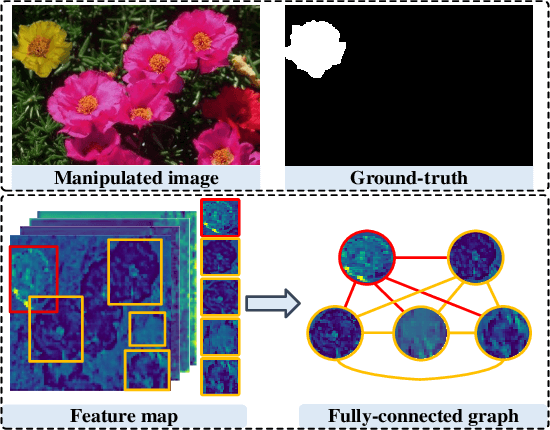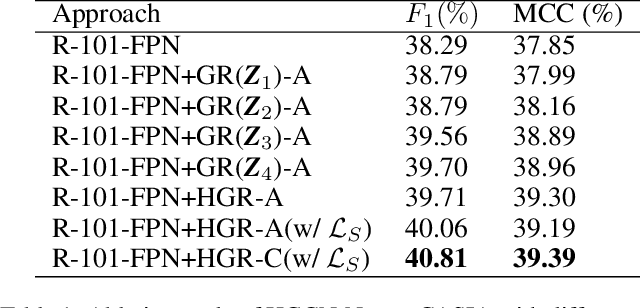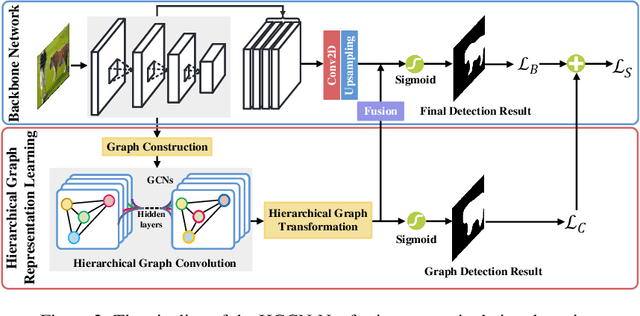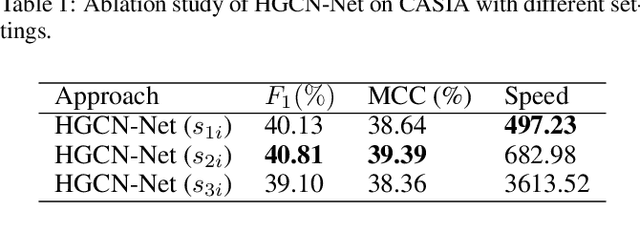Wenyan Pan
Auto-Focus Contrastive Learning for Image Manipulation Detection
Nov 20, 2022



Abstract:Generally, current image manipulation detection models are simply built on manipulation traces. However, we argue that those models achieve sub-optimal detection performance as it tends to: 1) distinguish the manipulation traces from a lot of noisy information within the entire image, and 2) ignore the trace relations among the pixels of each manipulated region and its surroundings. To overcome these limitations, we propose an Auto-Focus Contrastive Learning (AF-CL) network for image manipulation detection. It contains two main ideas, i.e., multi-scale view generation (MSVG) and trace relation modeling (TRM). Specifically, MSVG aims to generate a pair of views, each of which contains the manipulated region and its surroundings at a different scale, while TRM plays a role in modeling the trace relations among the pixels of each manipulated region and its surroundings for learning the discriminative representation. After learning the AF-CL network by minimizing the distance between the representations of corresponding views, the learned network is able to automatically focus on the manipulated region and its surroundings and sufficiently explore their trace relations for accurate manipulation detection. Extensive experiments demonstrate that, compared to the state-of-the-arts, AF-CL provides significant performance improvements, i.e., up to 2.5%, 7.5%, and 0.8% F1 score, on CAISA, NIST, and Coverage datasets, respectively.
Learning Hierarchical Graph Representation for Image Manipulation Detection
Jan 15, 2022



Abstract:The objective of image manipulation detection is to identify and locate the manipulated regions in the images. Recent approaches mostly adopt the sophisticated Convolutional Neural Networks (CNNs) to capture the tampering artifacts left in the images to locate the manipulated regions. However, these approaches ignore the feature correlations, i.e., feature inconsistencies, between manipulated regions and non-manipulated regions, leading to inferior detection performance. To address this issue, we propose a hierarchical Graph Convolutional Network (HGCN-Net), which consists of two parallel branches: the backbone network branch and the hierarchical graph representation learning (HGRL) branch for image manipulation detection. Specifically, the feature maps of a given image are extracted by the backbone network branch, and then the feature correlations within the feature maps are modeled as a set of fully-connected graphs for learning the hierarchical graph representation by the HGRL branch. The learned hierarchical graph representation can sufficiently capture the feature correlations across different scales, and thus it provides high discriminability for distinguishing manipulated and non-manipulated regions. Extensive experiments on four public datasets demonstrate that the proposed HGCN-Net not only provides promising detection accuracy, but also achieves strong robustness under a variety of common image attacks in the task of image manipulation detection, compared to the state-of-the-arts.
 Add to Chrome
Add to Chrome Add to Firefox
Add to Firefox Add to Edge
Add to Edge